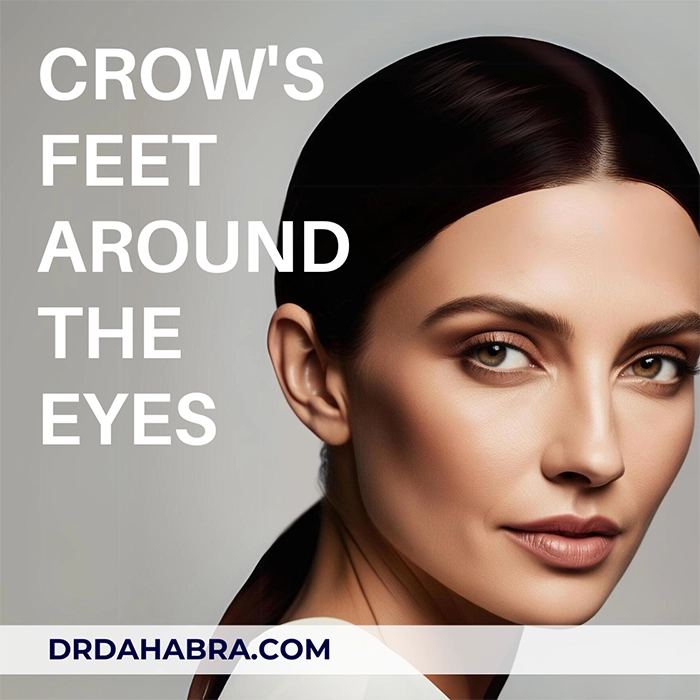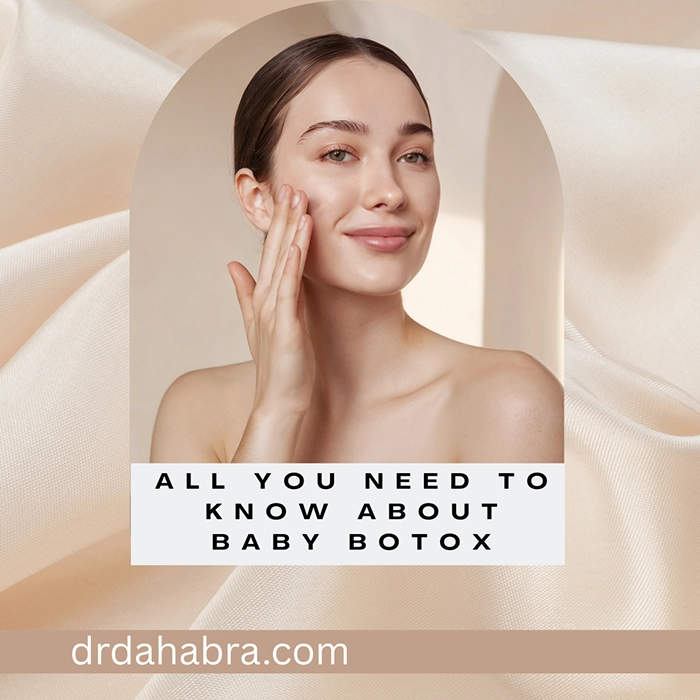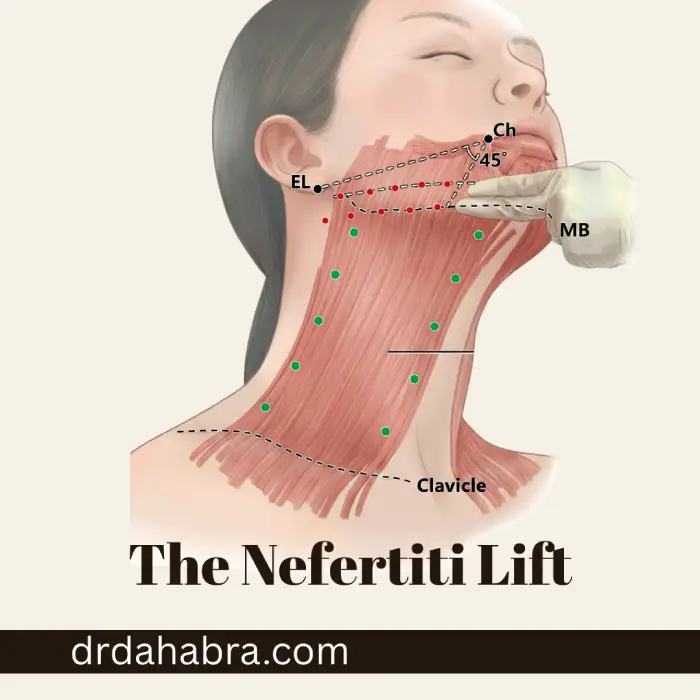What is the main cause of crow’s feet? And can you get rid of the crow’s feet around the eyes?
Understanding Crow’s Feet Around the Eyes
What is crows feet around the eyes?
What is the main cause of crow’s feet?
Can you get get rid of crow’s feet around the eyes?
We will answer these top questions in this article; keep reading.
Crow’s feet are the fine lines that appear at the outer edges of the eyes, often deepening with age and expressions like smiling and squinting. Unlike other wrinkles that may develop from sagging skin, crow’s feet are primarily caused by muscle movement around the eyes.
This delicate area has fewer oil glands than other parts of the face, making it prone to dryness and early aging. Crow’s feet are often classified into two types: dynamic wrinkles, which appear with facial expressions, and static wrinkles, which remain visible even when the face is relaxed.
Crow’s feet are one of the first signs of aging that many notice, often beginning to form in the late 20s or early 30s. Because the skin around the eyes is thin and sensitive, it’s more susceptible to environmental damage and loss of collagen and elastin.
This gives crow’s feet a unique texture, different from other facial wrinkles, often requiring targeted treatments for reduction or prevention.
Understanding crow’s feet and their causes is the first step in minimizing their appearance. Addressing lifestyle factors, preventive care, and treatment options allows managing these wrinkles effectively for a youthful and refreshed look.
Table of Contents
1. Common Causes of Crow’s Feet
2. Signs and Symptoms of Crow’s Feet
3. How Aging Impacts Crow’s Feet
4. Environmental and Lifestyle Contributors
5. Preventing Crow’s Feet in Your 20s and 30s
6. Daily Skin Care Routine for Reducing Crow’s Feet
7. Best Topical Treatments for Crow’s Feet
8. Role of Diet and Hydration in Skin Health
9. Non-Surgical Treatments for Crow’s Feet
10. Botox for Crow’s Feet: What to Expect
11. Laser Treatments and Chemical Peels
12. Using Dermal Fillers to Soften Lines
13. Natural Remedies and At-Home Care for Crow’s Feet
14. When to See a Dermatologist for Crow’s Feet
15. Frequently Asked Questions (FAQs)
16. Conclusion: What is Crows Feet Around The Eyes
17. Transform Your Look by Getting Rid of Crow’s Feet Wrinkles Around the Eyes
18. References
1. Common Causes of Crow’s Feet
Crow’s feet form due to repeated muscle movements around the eyes and skin aging, which deplete skin elasticity and collagen over time.
Frequent expressions, like smiling or squinting, activate the orbicularis oculi muscles, causing the skin to fold and eventually leading to lines. This process accelerates as collagen and elastin levels naturally decline with age, making the lines more profound and prominent.
Exposure to sunlight is one of the main culprits in hastening the appearance of crow’s feet—UV radiation damages collagen and elastin fibers, which support skin elasticity, causing premature aging.
Another contributing factor is dehydration. When skin lacks moisture, it becomes brittle, leading to wrinkles forming more easily. Other external factors, like smoking, also play a significant role in crow’s feet, as it introduces toxins that reduce blood flow to the skin, impairing its health and appearance.
Some people are genetically predisposed to develop crow’s feet earlier than others, but lifestyle habits significantly influence their severity and onset. Taking preventive steps against these causes can help delay the formation of crow’s feet, especially with an early skincare routine.
2. Signs and Symptoms of Crow’s Feet
Crow’s feet are often the first visible lines around the eyes, characterized by their “fan-like” pattern extending from the outer eye corners. They are classified as dynamic wrinkles, appearing initially only with facial expressions like smiling or squinting.
Over time, they can transition to static wrinkles that remain visible even when the face is relaxed, giving a permanent aged appearance.
The texture of crow’s feet is also different from other facial lines; they tend to be okay and deep-set due to the frequent contraction of eye muscles.
You may notice that makeup tends to settle into these lines, highlighting them further.
Crow’s feet may also feel slightly drier than the rest of the skin on the face, especially if skin hydration isn’t adequately maintained.
For many, crow’s feet are a natural and expected part of aging, but they can still impact overall facial appearance. Identifying them early can help individuals begin a skincare and prevention regimen before the lines become more profound and permanent.
3. How Aging Impacts Crow’s Feet
Aging is the most prominent factor in developing crow’s feet, as it directly impacts the skin’s ability to retain elasticity and produce collagen.
With age, collagen production slows down, causing the skin to lose its plump, youthful appearance and making it more susceptible to fine lines and wrinkles.
This loss of elasticity around the eyes, where the skin is naturally thinner, leads to the deeper lines we know as crow’s feet.
Also, elastin fibers, which provide skin stretch and resilience, degrade over time, meaning the skin takes longer to bounce back after smiling, squinting, or other facial expressions.
Natural hydration levels also decrease as the skin’s natural oils reduce with age, causing dryness that further highlights these lines. The combined effects of these aging factors make crow’s feet a prominent sign of skin aging, especially in the delicate area around the eyes.
Hormonal changes during aging also play a part. For instance, menopause can cause a drop in estrogen levels, impacting skin thickness and hydration.
This hormonal shift can exacerbate crow’s feet, making them more noticeable as we age. Understanding this process can help choose age-specific treatments to target crow’s feet effectively.
Some call these hooded eyes. Hooded eyes definition: Hooded eyes are an eye shape where the eyelid is covered by extra skin and soft tissue around the brow but not the eye itself.
4. Environmental and Lifestyle Contributors
Environmental factors, such as sun exposure and pollution, and lifestyle habits like smoking significantly contribute to the formation and worsening of crow’s feet.
UV radiation from the sun accelerates the breakdown of collagen and elastin fibers, leaving skin more vulnerable to wrinkles. This is especially true for the skin around the eyes, which is more delicate and sensitive to sun damage, even if exposed briefly without protection.
Smoking is another major contributor to crow’s feet. Chemicals in cigarette smoke reduce blood flow to the skin, impairing collagen production and leading to premature wrinkling.
Repeated facial movements like squinting in bright light or pursing lips while smoking can also speed up the appearance of fine lines around the eyes.
Air pollution and environmental toxins cause oxidative stress, damaging skin cells and contributing to premature aging signs, including crow’s feet. These environmental and lifestyle factors accelerate skin damage, but the effects can be minimized by wearing sunscreen, sunglasses, and healthy skin and lifestyle habits.
5. Preventing Crow’s Feet in Your 20s and 30s
Starting early with preventive measures in your 20s and 30s can be highly effective for delaying the onset of crow’s feet.
Applying sunscreen daily, especially around the eyes, can protect the skin from UV damage that leads to early wrinkles.
She wore sunglasses when outside, which reduces squinting, helping prevent repetitive movements that deepen crow’s feet over time.
Moisturizing is another essential preventive step. Hydrating the skin around the eyes can prevent dryness and make the area less prone to fine lines.
Incorporating an eye cream with antioxidants and collagen-boosting ingredients, like retinol or vitamin C, into your skincare routine can protect against environmental damage and help maintain youthful skin.
Lifestyle choices also play a critical role. Avoiding smoking, staying hydrated, and eating a diet rich in antioxidants can support overall skin health, helping prevent early aging signs.
By taking these simple steps early on, you can significantly reduce the likelihood of developing crow’s feet prematurely.
6. Daily Skin Care Routine for Reducing Crow’s Feet
A consistent skincare routine can make a big difference in preventing and treating crow’s feet.
Cleansing the face gently daily removes impurities that could clog pores and accelerate aging, particularly around the delicate eye area. Follow this with a hydrating toner and serum rich in antioxidants like vitamin C, which helps protect skin from environmental stressors.
An eye cream with active ingredients such as hyaluronic acid, peptides, or retinoids can boost collagen production and plump the skin around the eyes. Retinoids, in particular, are known for their anti-aging effects, as they promote skin cell turnover and reduce fine lines over time.
Applying sunscreen around the eyes daily is essential, as UV exposure can worsen crow’s feet.
Nighttime care is equally important, as the skin repairs itself while you sleep. Applying a more decadent eye cream or a nighttime serum before bed can help keep the eye area hydrated and reduce the appearance of crow’s feet.
This daily care routine can be preventive and restorative, keeping the skin around the eyes youthful and smooth.
7. Best Topical Treatments for Crow’s Feet
Topical treatments are a first line of defense against crow’s feet, and many products today contain potent ingredients designed to combat fine lines and wrinkles.
Retinoids are among the most popular, as they stimulate collagen production, improve skin cell turnover, and minimize crow’s feet. Retinol, a gentler derivative, is also effective for sensitive skin patients who may not tolerate more potent retinoids.
Peptides are another excellent choice, as they signal skin cells to produce collagen, leading to firmer skin. Hyaluronic acid is a go-to for hydration, helping the skin retain moisture and giving it a plumper appearance, which smooths fine lines around the eyes.
Antioxidants like vitamin C also play a role by protecting skin from free radicals that cause aging.
Eye creams or serums with these ingredients should be applied regularly for the best results. Combining these topical treatments can help slow the progression of crow’s feet, and they may even soften existing lines with consistent use.
8. Role of Diet and Hydration in Skin Health
A nutritious diet and proper hydration are foundational for healthy skin and can significantly impact the appearance of crow’s feet.
Drinking enough water keeps skin hydrated from the inside out, helping maintain elasticity and reducing the visibility of fine lines. When skin is well-hydrated, it looks plumper and healthier, which can diminish the appearance of crow’s feet.
A diet rich in antioxidants, such as those found in fruits, vegetables, nuts, and seeds, combats free radicals contributing to aging. Vitamins C and E in citrus fruits, nuts, and leafy greens promote collagen production and protect against environmental damage.
Omega-3 fatty acids in fish, chia seeds, and walnuts also support skin elasticity.
Limiting sugar intake is also essential, as excess sugar can lead to glycation, damaging collagen and speeding up aging. A balanced diet with plenty of water and skin-friendly nutrients can improve skin health and reduce signs of crow’s feet over time.
9. Non-Surgical Treatments for Crow’s Feet
For those seeking more intensive treatment, several non-surgical options can effectively reduce crow’s feet.
Chemical peels are a popular choice, as they remove dead skin layers and promote new skin cell growth, reducing the appearance of fine lines.
Laser therapy, such as fractional laser treatments, can also stimulate collagen production, helping to firm the skin around the eyes.
Microneedling is another effective non-surgical treatment. This technique involves creating tiny punctures in the skin to stimulate collagen and elastin production.
With repeated sessions, microneedling can help smooth out crow’s feet and improve overall skin texture. Radiofrequency treatments, which use heat to stimulate collagen production, are also non-invasive for reducing crow’s feet.
These non-surgical methods provide noticeable results without the downtime and cost of surgery. However, they usually require multiple sessions for optimal results and should be conducted by a licensed professional.
10. Botox for Crow’s Feet: What to Expect
Botox is one of the most widely used treatments for crow’s feet because it temporarily paralyzes the muscles responsible for creating these lines, smoothing the skin around the eyes.
A Botox injection works by blocking nerve signals to the muscles, preventing them from contracting and reducing the depth of wrinkles. The treatment is relatively quick, typically taking about 15 minutes, with minimal discomfort.
Results from Botox generally appear within a few days and last for three to four months, depending on the individual. While Botox can effectively soften crow’s feet, it is not a permanent solution, requiring maintenance treatments to keep wrinkles at bay. Botox is a safe and effective way to reduce the appearance of crow’s feet, mainly when performed by a qualified professional.
Botox side effects are minimal but can include mild bruising, temporary drooping, or a slight headache post-treatment. Consulting with an experienced injector is essential to ensure the best and most natural-looking results.
11. Laser Treatments and Chemical Peels
Laser treatments and chemical peels are popular options for treating crow’s feet, as they resurface the skin and stimulate collagen production.
Fractional CO2 laser treatments are particularly effective, as they target specific skin layers to reduce wrinkles and promote new skin growth, which smooths crow’s feet. The laser treatment involves minimal downtime and results that last for months.
Chemical peels, such as those using glycolic or trichloroacetic acid, work by exfoliating the outer layer of skin, encouraging the regeneration of new, smoother skin. This process reduces the appearance of fine lines and helps to even out skin texture.
Depending on the depth of the peel, recovery time can vary from a few days to a couple of weeks.
Both lasers and chemical peels substantially improve crow’s feet, especially for those looking for a non-invasive alternative to injections. However, professionals should perform these treatments, as improper use can lead to skin irritation or scarring.
12. Using Dermal Fillers to Soften Lines
Dermal fillers, typically made of hyaluronic acid, are another option to reduce crow’s feet by adding volume to the area around the eyes.
When injected, fillers plump the skin, filling in wrinkles and creating a smoother surface. Fillers can also stimulate collagen production, offering both immediate and long-term benefits.
Results from dermal fillers are usually visible right after treatment, and the effects can last from six months to a year, depending on the type of filler used. The procedure involves minimal downtime, though there may be some swelling or bruising at the injection site for a few days.
Fillers are especially beneficial for individuals with profound, static crow’s feet that do not respond to muscle-relaxing treatments like Botox.
While effective, dermal fillers must be administered by a skilled practitioner to avoid a “puffy” or unnatural appearance. Choosing the right type and amount of filler is crucial for achieving natural-looking results.
13. Natural Remedies and At-Home Care for Crow’s Feet
For those who prefer a more natural approach, several at-home remedies and treatments can help minimize crow’s feet.
Applying a cold compress or cucumber slices to the eyes can reduce puffiness and improve blood flow, refreshing the eye area. Natural oils like coconut and almond oil are also famous for their moisturizing properties and can help soften fine lines with regular application.
Aloe vera is known for its hydrating and soothing qualities, making it an excellent addition to eye care routines. Applying aloe gel around the eyes before bed can hydrate the skin and reduce signs of aging over time.
Facial massages using gentle pressure around the eyes can improve blood circulation, promoting healthier skin.
These natural remedies may not offer the dramatic results of cosmetic treatments. Still, regular use can help maintain skin hydration and reduce the early signs of crow’s feet, providing a more youthful appearance.
14. When to See a Dermatologist for Crow’s Feet
If crow’s feet become a significant cosmetic concern or at-home and over-the-counter remedies do not yield the desired results, consulting a dermatologist can help.
Dermatologists offer a range of advanced treatment options, from prescription-strength retinoids to professional chemical peels, which can provide more effective and faster results. They can also assess skin health and recommend treatments tailored to individual skin types.
In cases where deeper lines are present or for those seeking more dramatic improvement, a dermatologist may suggest Botox, fillers, or laser therapy, which provides targeted wrinkle reduction.
Consulting a qualified professional can ensure safe and effective treatment.
Regular visits to a dermatologist are beneficial, even for preventive measures, as they can help monitor skin health, suggest skincare adjustments, and provide early intervention to manage crow’s feet.
15. Frequently Asked Questions (FAQs) about What Are Crows Feet Around the Eyes
Q1. What are crow’s feet?
Concise Answer: Crow’s feet are fine lines or wrinkles that form around the outer corners of the eyes.
Detailed Answer: Crow’s feet, also known as laugh lines, are the fine lines that appear around the eyes due to repeated facial expressions and age. They are dynamic wrinkles that form with facial movement but may become static as collagen and elasticity decline.
Q2. Why do crow’s feet form?
Concise Answer: Crow’s feet form due to repeated muscle movement and natural aging.
Detailed Answer: Crow’s feet are primarily caused by repeated expressions like squinting or smiling, which activate muscles around the eyes and deepen as skin loses collagen and elasticity with age. Sun exposure and lifestyle habits, like smoking, also contribute.
Q3. Can crow’s feet be prevented?
Concise Answer: They can be minimized with preventive skincare and lifestyle choices.
Detailed Answer: Preventing crow’s feet involves using sunscreen, hydrating well, and incorporating anti-aging products like retinoids in skincare. Lifestyle habits like not smoking and wearing sunglasses can also help delay their formation.
Q4. Is Botox effective for crow’s feet?
Concise Answer: Botox can relax muscles and reduce crow’s feet.
Detailed Answer: Botox is a popular treatment for crow’s feet because it temporarily relaxes the muscles around the eyes, smoothing out wrinkles. Effects last about 3-4 months, making it a manageable, minimally invasive option for wrinkle reduction.
Q5. How does sun exposure affect crow’s feet?
Concise Answer: Sun exposure accelerates skin aging, worsening crow’s feet.
Detailed Answer: Sun exposure contributes to crow’s feet by breaking down collagen and elastin in the skin through UV radiation. This weakens the skin’s structure and leads to premature wrinkles, particularly around the delicate eye area.
Wearing sunscreen and sunglasses can help reduce this damage and prevent early crow’s feet.
Q6. Can a healthy diet prevent crow’s feet?
Concise Answer: A healthy diet can help delay crow’s feet.
Detailed Answer: A diet rich in antioxidants, vitamins, and omega-3 fatty acids can support skin health and slow aging. Foods high in vitamins C and E help promote collagen production, while omega-3s maintain skin elasticity.
Staying hydrated is also essential, as it keeps skin plump and reduces the appearance of fine lines.
Q7. Is retinol effective for treating crow’s feet?
Concise Answer: Yes, retinol can effectively reduce crow’s feet.
Detailed Answer: Retinol, a derivative of vitamin A, is known for its ability to stimulate collagen production and increase skin cell turnover, which can reduce the appearance of crow’s feet over time.
Regular retinol-based creams can gradually soften these lines, although it may take several weeks to see noticeable results.
Q8. Are natural remedies like coconut oil effective for crow’s feet?
Concise Answer: Natural remedies can provide mild improvement in crow’s feet.
Detailed Answer: Coconut oil and other natural remedies like aloe vera or almond oil can help hydrate the skin around the eyes, reducing the appearance of fine lines. These remedies may not provide dramatic results, but can be beneficial for maintaining hydration and improving skin texture when used consistently.
Q9. How often should I apply eye cream for crow’s feet?
Concise Answer: Apply eye cream daily, preferably morning and night.
Detailed Answer: For optimal results, apply eye cream twice daily—once in the morning and once before bed. Look for eye creams with peptides, hyaluronic acid, and antioxidants to hydrate and support collagen production.
Consistent use helps keep the delicate skin around the eyes moisturized and can prevent deeper wrinkles from forming.
Q10. What’s the best age to start crow’s feet treatments?
Concise Answer: Start treatments in your mid-20s to early 30s for prevention.
Detailed Answer: Many people begin seeing early signs of crow’s feet in their late 20s or early 30s, so this is an ideal time to start preventive treatments.
Using sunscreen, hydrating well, and incorporating anti-aging ingredients like retinol and vitamin C into your skincare routine early on can help delay crow’s feet and maintain youthful skin.
Q11. Can Botox eliminate crow’s feet?
Concise Answer: Botox can significantly reduce, but not permanently eliminate, crow’s feet.
Detailed Answer: Botox injections can soften the appearance of crow’s feet by temporarily relaxing the muscles that cause these wrinkles. Results typically last three to four months, but Botox doesn’t provide a permanent solution.
Regular treatments are needed to maintain a smoother appearance around the eyes.
Q12. Are chemical peels safe for the eye area?
Concise Answer: Yes, but only specific, mild peels are safe for the eye area.
Detailed Answer: Mild chemical peels, such as those with glycolic acid, can be safe for the eye area and may reduce fine lines.
However, because the skin around the eyes is sensitive, it’s important to choose gentle peels and consult a dermatologist to ensure safety and avoid irritation.
Q13. How long do dermal fillers last for crow’s feet?
Concise Answer: Dermal fillers can last from six months to a year.
Detailed Answer: Dermal fillers, typically made from hyaluronic acid, provide volume to the skin around the eyes, reducing the appearance of crow’s feet.
Their effects generally last between six months and a year, depending on the type of filler used and individual factors like metabolism.
Q14. Can hydration alone reduce crow’s feet?
Concise Answer: Hydration can help minimize crow’s feet, but won’t eliminate them.
Detailed Answer: Staying well-hydrated helps keep the skin around the eyes plump and reduces the visibility of fine lines, but it doesn’t eliminate crow’s feet.
While hydration is essential, targeted skincare products and treatments are typically necessary for noticeable improvement in crow’s feet.
Q15. Should I see a dermatologist for crow’s feet?
Concise Answer: Yes, a dermatologist can provide effective treatment options.
Detailed Answer: If crow’s feet are a significant concern or over-the-counter products aren’t yielding the desired results, consulting a dermatologist is advisable.
Dermatologists can offer advanced treatments like Botox, laser therapy, or prescription-strength retinoids to target crow’s feet effectively and achieve smoother skin around the eyes.
16. Conclusion: What is Crows Feet Around the Eyes?
Crow’s feet around the eyes are a common sign of aging caused by natural and environmental factors. While they’re a natural part of getting older, effective prevention and treatment options exist to reduce their appearance and maintain smoother skin.
Protective measures, including sunscreen and hydration, are foundational for delaying these lines, while treatments like Botox, dermal fillers, and laser therapy offer targeted solutions for those looking for immediate results.
With advances in skincare and cosmetic treatments, managing crow’s feet has never been more accessible.
Finding the right approach, whether through lifestyle changes or cosmetic procedures, can help maintain a youthful look and a smooth, refreshed appearance around the eyes.
This article covered everything about: what is crows feet around the eyes?
17. Transform Your Look By Getting Rid of Crow’s Feet Wrinkles Around the Eyes
Experience the revolutionary power of the crow’s feet wrinkles around the eyes removal treatment in Florida. Our state-of-the-art treatment revitalizes and rejuvenates, offering you a path to radiant, youthful skin. Why wait to unlock your best self?
Call us now at (954) 595-2607 or book online. Your journey to flawless skin begins with just a click or a call.
Embrace the beauty, embrace innovation – Embrace You.
18. References
- Dr. Chadi Dahabra
- Plantation Med Spa
- West Palm Beach Med Spa
- Beverly Hills Wellness Center & Med Spa
- Effects of Oral Collagen on Skin Hydration and Elasticity: A Systematic Review and Meta-Analysis
- Molecular Pathways Involved in Dermal Aging and Wrinkles Formation
- Influence of UV Radiation on Collagen and Elastin Integrity in Aging Skin
- The Role of Collagen and Elastin in Skin Wrinkling and Elasticity
- Botulinum Toxin and Wrinkle Reduction: An Overview
- Diet, Hydration, and Their Impact on Skin Elasticity and Wrinkles




